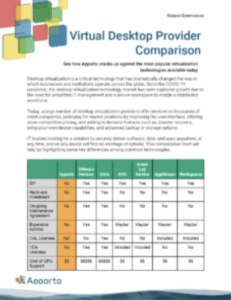Tips for Successful Implementation of Cloud Desktops in Educational Institutions
In today’s world, technology is playing an increasingly important role in education. To keep up with the latest developments, many institutions are turning to the cloud to provide their students and staff with the flexibility and mobility they need. However, implementing cloud desktops in educational settings can be challenging if you don’t know the best practices. In this article, we will guide you through the process of successfully implementing cloud desktops in educational institutions.
Understanding Cloud Desktops in Education
What are Cloud Desktops?
Cloud desktops are a type of virtual desktop infrastructure (VDI) that allows users to access their desktop environment from any device with an internet connection. Instead of storing files and applications locally on a user’s device, cloud desktops store everything on remote servers in the cloud. This means that users can access their desktops and files from anywhere, as long as they have an internet connection.
Cloud desktops are becoming increasingly popular in educational institutions due to their flexibility, mobility, cost savings, and increased security.
Benefits of Cloud Desktops in Educational Institutions
There are several benefits of using cloud desktops in educational institutions:
- Flexibility: Students and staff can access their desktops from any device with an internet connection, making it easier to work from home or on the go.
- Mobility: Cloud desktops allow students and staff to work from any location, as long as they have an internet connection. This is particularly beneficial for students who may need to work remotely due to illness or other circumstances.
- Cost Savings: Institutions can save money on hardware and software expenses by hosting desktops in the cloud. This can be particularly beneficial for smaller institutions with limited budgets.
- Increased Security: Cloud providers typically have more robust security measures in place than traditional on-premises environments. This can help to protect sensitive data and prevent unauthorized access.
Common Challenges and Solutions
Despite the benefits of cloud desktops, there are some challenges that educational institutions may face when implementing them:
- Slow Internet Speeds: Slow internet speeds can make it difficult for students and staff to access their desktops from remote locations. Institutions may need to invest in better internet connectivity to overcome this challenge. This can be particularly challenging for institutions in rural areas with limited internet access.
- Resistance to Change: Some staff members may be resistant to the change to cloud desktops, and may need additional training and support to adjust to the new technology. It is important for institutions to provide adequate training and support to ensure a successful transition.
Despite these challenges, cloud desktops can offer significant benefits to educational institutions, including increased flexibility, mobility, cost savings, and security. As technology continues to evolve, it is likely that more institutions will turn to cloud desktops as a way to provide their students and staff with greater access to their desktop environments.
Assessing Your Institution’s Needs
Cloud desktops are becoming increasingly popular in educational institutions, providing a flexible and cost-effective solution for students, staff, and faculty to access their work from anywhere, at any time. However, before implementing cloud desktops, it’s important to assess your institution’s needs and objectives to ensure a successful transition.
Identifying Key Stakeholders
One of the first steps in assessing your institution’s needs is to identify the key stakeholders who will be impacted by the change. This may include students, staff, IT, and administration. Each stakeholder group will have different needs and requirements when it comes to cloud desktops, and it’s important to take these into consideration when planning the implementation.
For example, students may require access to specific software programs for their coursework, while staff and faculty may need to access sensitive data and files. IT will need to ensure that the infrastructure can support the new system, and administration will need to consider the budget and resources required for the implementation.
Evaluating Current Infrastructure
Another important step in assessing your institution’s needs is to evaluate your current infrastructure to ensure that it can support cloud desktops.
Internet connectivity is crucial for cloud desktops, as all data and applications are accessed through the internet. It’s important to ensure that your institution has a reliable and fast internet connection to support the new system.
Setting Goals and Objectives
Once you’ve identified your key stakeholders and evaluated your infrastructure, it’s important to set goals and objectives for your cloud desktop implementation. This may include improving flexibility and mobility, reducing costs, or increasing security.
Implementing cloud desktops can provide numerous benefits, such as allowing students and staff to access their work from anywhere, reducing the need for expensive hardware and software, and increasing security and compliance. However, it’s important to have clear goals and objectives in place to ensure a successful implementation.
By assessing your institution’s needs, identifying key stakeholders, evaluating your infrastructure, and setting goals and objectives, you can ensure a successful transition to cloud desktops and provide a flexible and cost-effective solution for your institution.
Virtual Desktop Provider Comparison
Choosing the Right Cloud Desktop Solution
In today’s digital world, cloud desktop solutions have become increasingly popular for institutions of all sizes. Cloud desktops offer a flexible and scalable solution for organizations looking to provide their employees with remote access to their work environment. However, choosing the right cloud desktop solution can be a daunting task. In this article, we will explore some key factors to consider when evaluating cloud desktop providers.
Comparing Cloud Desktop Providers
There are several cloud desktop providers to choose from, each with its own set of features and pricing. It’s important to compare providers to find the one that best meets the needs of your institution. Some providers may offer more robust collaboration tools, while others may focus on providing a simple and user-friendly interface. Additionally, pricing models can vary greatly between providers, so it’s important to evaluate the cost of each option.
Evaluating Features and Functionality
When evaluating cloud desktop providers, it’s important to consider the features and functionality that are important to your institution. This may include collaboration tools, storage capacity, and ease of use. Some providers may offer advanced features such as virtual whiteboards and video conferencing, while others may focus on providing a streamlined and intuitive user experience. It’s important to evaluate the needs of your institution and choose a provider that offers the features and functionality that align with those needs.
Considering Security and Compliance Requirements
Security and compliance are critical considerations when choosing a cloud desktop provider. It’s important to choose a provider that meets your institution’s security and compliance requirements. This may include HIPAA compliance for healthcare organizations, data encryption to protect sensitive information, and multi-factor authentication to prevent unauthorized access. It’s important to thoroughly evaluate the security and compliance measures of each provider to ensure that they align with your institution’s needs.
In conclusion, choosing the right cloud desktop solution requires careful consideration of several key factors. By comparing providers, evaluating features and functionality, and considering security and compliance requirements, institutions can find a cloud desktop solution that meets their unique needs.
Preparing for Implementation
Implementing a cloud desktop solution can be a complex process, but it doesn’t have to be overwhelming. By taking the time to properly prepare for implementation, you can ensure a smooth transition and a successful outcome.
Developing a Project Timeline
One of the first steps in preparing for implementation is to develop a project timeline. This timeline should outline all of the necessary steps for a successful implementation, including deadlines for each phase of the project, as well as any necessary training and testing.
It’s important to involve all stakeholders in the development of the project timeline to ensure that everyone is on the same page and has a clear understanding of what needs to be done and when. This can help to prevent delays and ensure that the project stays on track.
Allocating Resources and Budget
Another important aspect of preparing for implementation is to allocate enough resources and budget for your cloud desktop implementation. This may include hiring additional IT staff, investing in better internet connectivity, or purchasing new hardware.
It’s important to carefully consider all of the costs associated with the implementation, including any ongoing maintenance and support costs, to ensure that you have enough budget to see the project through to completion.
Training Staff and Educators
Finally, it’s important to provide training and support for staff and educators to ensure that they are comfortable using the new technology. This may include on-site training, online training, or tutorials.
It’s important to involve staff and educators in the planning and development of the training program to ensure that it meets their needs and addresses any concerns they may have. Providing ongoing support and training can help to ensure that the implementation is successful and that everyone is able to fully utilize the new technology.
Conclusion
Implementing cloud desktops in educational institutions can provide students and staff with the flexibility and mobility they need to succeed. By following the best practices outlined in this article, you can ensure a successful implementation that meets the needs of your institution.



